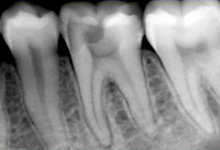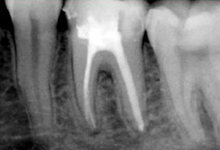

Click Here Why does a tooth require root canal treatment (R.C.T.)?
Click Here Can a tooth with an abscess or infection that has spread beyond the root be saved by R.C.T.?
Click Here How many visits does it take to complete root canal treatment?
Endodontics Root canal
The pulp is the inner most tissue of the tooth. It is a soft tissue that contains nerves, blood vessels and connective tissue. It lies within the tooth and extends from the crown of the tooth to the tip of the root in the bone of the jaws.
The pulp is the inner most tissue of the tooth. It is a soft tissue that contains nerves, blood vessels and connective tissue. It lies within the tooth and extends from the crown of the tooth to the tip of the root in the bone of the jaws.
When the pulp is diseased or injured and can't repair itself, it dies. The most common cause of pulp death is a cracked tooth or a deep cavity. Both of these problems can let germs (bacteria) enter the pulp. Germs can cause an infection inside the tooth. Left without treatment, pus builds up at the root tip, in the jawbone, forming a "pus-pocket" called an abscess. An abscess can cause damage to the bone around the teeth. When the infected pulp is not removed, pain and swelling can result. Certain byproducts of the infection can injure your jaw bones. The infection may spread to the adjacent teeth causing pain and discomfort. Without treatment, your tooth may have to be removed
To save the tooth and keep it in service for lifetime, Root canal procedure needs to be done in such infected teeth.
Treatment often involves one to three visits depending upon the infection. During treatment, I will removes the diseased pulp. The pulp chamber and root canal(s) of the tooth are then cleaned and sealed.
Here's how your tooth is saved through treatment:
Your restored tooth could last a lifetime, if you continue to care for your teeth and gums. However, regular checkups are necessary. As long as the root(s) of a treated tooth are nourished by the tissues around it, your tooth will remain healthy.
 before
before
 after
after
"We provide convenient hours and affordable prices so you can have the smile you've always wanted"
